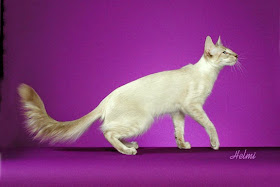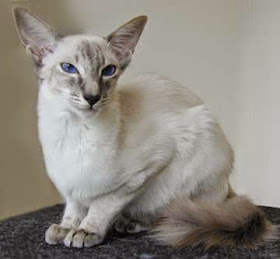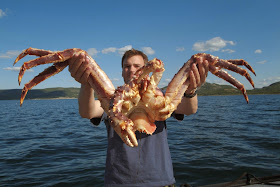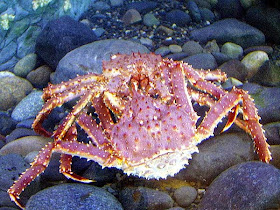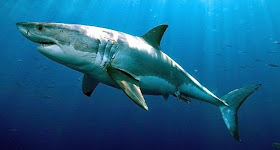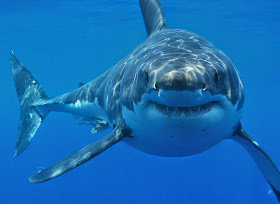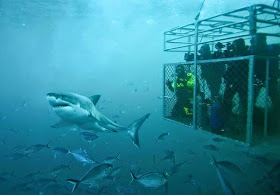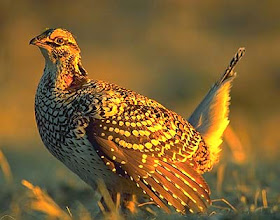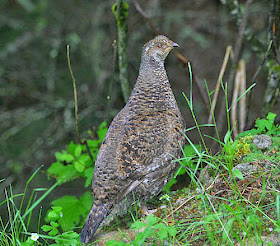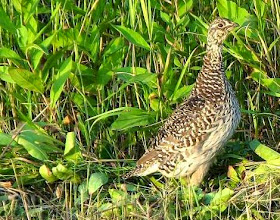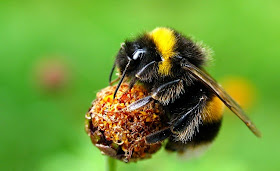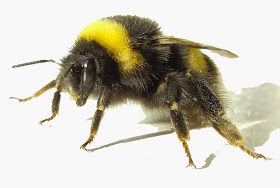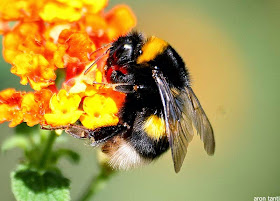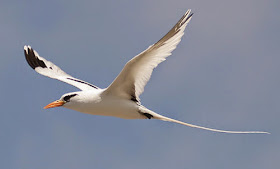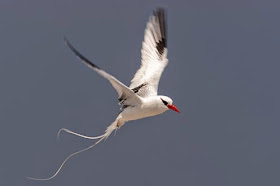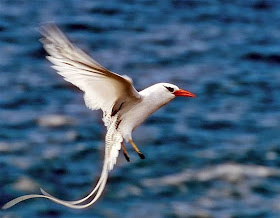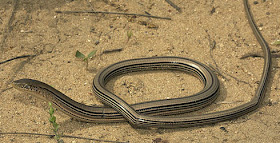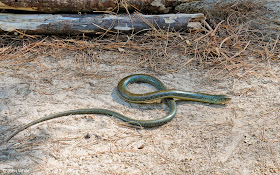Saturday, January 31, 2015
Javanese Cat
The Javanese breed of cat is generally used to refer to Balinese cats that don't have the typical modern Balinese markings or colourings (so cats that are not brown, silver or blue).
The Javanese cat has soft, shiny fur and can often be found with features closely resembling the Siamese cat. The Javanese cat is a popular household cat around the world and adores human attention.
The Javanese cat has very social tendencies and therefore can become distressed if they are on their own. The Javanese cat is also known to be a fairly noise breed of domestic cat.
The calm and devoted temperament of the Javanese cat makes it a very popular breed of cat to be kept as a household pet, as the Javanese cat is often very affectionate towards both humans and other animals.
Due to the fact that the Javanese cat is directly related to the Siamese cat and the Balinese cat, it has picked defects as well as assets from its ancestors or though today, cats have been bred so extensively that native defects are often bred out of the breed.
Friday, January 30, 2015
King Crab
King Crabs are known for their sheer size but only a couple of species get really big. King crabs are mainly found in the Southern Hemisphere where the waters are warmer but the Alaskan king crab is the obvious exception to this as the waters there are near freezing.
Red king crabs can have a leg span of up to 1.8m, blue king crabs often weigh over 8kg! King crabs hunt small fish and plankton in the oceans and are often found close to coral reefs or rocky areas where there are plenty of places for the king crab to hide.
The king crab is generally believed to come from the ancestors of hermit crabs, as with many species of crab today. King crabs are hunted all year round by fisherman and the king crab is seen to be delicacy in many parts of the world.
There are thought to be around 40 different species of king crab today, nearly all of which are hunted for food by humans due to their large size and the taste of their flesh. The most popular king crab for a human catch, is the red king crab as the red king crab is one of the largest species and one of the most readily available species of king crab in the ocean.
5 Oldest Animal Species Living Under Water
For the first cell that divided and turned into an organism that crawled out of the pool of live, animals have evolved into complex creatures that are equip with features that help them survive their environmental conditions. However, some animals still kept their most basic forms, even after millions of years. Below are five of the oldest animal species living in the waters that look pretty much the same as they did during the time of the dinosaurs.
Frilled Sharks
Considered as living fossils, these sharks have been around since 150 million years ago. They’re usually 5 feet long and have about 300 very sharp teeth lined up in 25 rows. What makes these sharks look so strange is that their mouth looks bigger than other shark species. They stay in close to the bottom of the ocean and rarely swim up, which is why not a lot is known about these creatures.
Horseshoe Shrimp
These guys were swimming with dinosaurs 200 million years ago. They may be tiny, with an average size of 2 to 4 millimeters in length, but they have the ability to survive almost any type of weather condition. Another feature that these shrimps have is the ability of their eggs to stay dormant when dry. Once hydrated, the eggs can develop and hatch.
Sturgeon
A fresh water fish, they’ve been swimming the waters of the North America and Eurasia for 200 million years. Like salmon, these fishes spend most of their lives migrating during winter. They’re also huge, reaching an average length of 5.5 feet and weighing at 200 to 300 kilos. Although the lay a lot of eggs, humans are constantly harvesting them, causing this magnificent creature to be listed as critically endangered.
Coelacanath
Another very rare fish that’s been around for more than 360 million years, coelacanaths are seen in the coast of Indonesia and Africa. They can grow to about 6.5 feet and weigh in at 90 kg. A strange feature of these fishes is that they use their lobe fins like legs which make them move like trotting horses. These fishes stay in the deep which is why it’s difficult to study them. They can also live up to 60 years old.
Horseshoe Crab
Named after horse shoes because of their shape, they have been around for 445 million years. Horseshoe Crabs are seen all over the world and are identified by their light brown exoskeleton, spines and long tails. These crabs have a total of nine eyes, but only use two for seeing. The others are used as light receptors.
Thursday, January 29, 2015
Great White Shark
Great white sharks (white shark) are found in coastal waters in every major ocean but the great white shark is most commonly sighted around Australia, South Africa, California and Mexico.
The great white shark can grow to more than 8m long and weigh well over 2,000kg. This makes the great white shark the worlds largest predatory fish! The great white shark has been known to attack humans in the water, this is often because the shark mistakes the human for another animal which it normally hunts since sharks do not like the taste of humans.
The great white shark hunts large fish, seal, porpoise, dolphin and whale, with the great white shark using an ambush technique to surprise their prey in order to secure their catch.
The great white shark is found in waters from just 1 m deep to 1,200 m deep. The great white shark has approximately 300 teeth which are arranged in a number of rows along both the great white sharks top and bottom jaws.
Due to the dominance and aggressiveness of the great white shark, the great white shark has no natural predators within the natural environment of the great white shark. The great white has shark has been known to fight with similar sized killer whales (orca) but this is a rare occurrence, and the great white shark has also been known to have been killed by large pods of dolphins that ram the great white shark.
The greatest predatory threat to the great white shark is the human being, many of whom kill the great white shark for both defensive reasons and for the meat of this apex predator. It is because of the threat to the great white shark from humans that has led to the population numbers of the great white shark decreasing making the great white shark a threatened species today.
Grouse
The grouse is a heavily-built bird that is found in the cold, forested areas of the Northern Hemisphere. The grouse is most closely related to other game birds including chickens, peasants and turkeys and, although not commonly farmed commercially, the grouse is hunted by humans in its natural habitat.
The grouse inhabits both hot and cold environments, and can be found in a variety of habitats like forests, moorland, shrub-land and close to rural farms.
In order to survive the bitter Northern winters, the grouse has feathered legs and toes which not only help to keep the grouse warm, but they also give the grouse more grip and stability when it is walking around in the snow.
Despite inhabiting areas that often fall within the Arctic Circle, thousands of grouse are hunted as game each year by humans. The grouse population numbers are not drastically effected however as they often lay a large number of eggs so the grouse population is able to increase at a fast rate.
The grouse is an omnivorous animal meaning that it eats both plants and other animals. Despite this though, plant matter makes up the majority of the grouse's diet as the grouse eats grasses, fruits, nuts, berries, shoots, seeds and flowers, along with insects and even rodents.
Due to its stocky build and the fact that the grouse is one of the few animals able to exist within the Arctic Circle, that grouse is preyed upon by a number of native predators. Wildcats including lynx, foxes, wolves and large birds of prey all prey upon the grouse, alongside human hunters.
Female grouse nests in a dip in the ground, following an elaborate mating display by the male grouse. The female grouse can lay up to 12 eggs at a time which hatch after a month of incubation.
Monday, January 26, 2015
Bumble Bee
The bumble bee is the most common type of bee with around 250 different species of the bumble bee found around the world.
Despite the fact that the bumble bee can be found in many countries, it is indigenous to the Northern Hemisphere, breeding more successfully in the more temperate climates.
The bumble bee is best known for having a sting on it's tail, which the bumble bee uses to protect itself from danger. Once the bumble bee has stung something with it's sting, the sting breaks off and the bumble bee generally dies. Despite common belief, not every bumble bee has a sting, in fact the male bumble bees (known as drones) do not have a sting at all. Only the female bumble bee has a sting on it's tail.
One of the main causes in the decline of the bumble bee populations is the fact that the places where the bumble bees nest are being disturbed often destroying the bumble bee's nest in the process.
The bumble bee is a herbivorous animal feeding primarily on nectar. Bumble bees also eat pollen and honey when there is no nectar available. Bumble bees have numerous natural predators including birds, larger insects and amphibians such as frogs and newts.
The queen bumble bee is the one who lays the eggs. She lays her eggs in a round-shaped mound that she then seals with wax. When the baby bumbles bees (larvae) hatch they are forced to eat their way out of their sealed dome.
Bumble bees are known to play a valuable part in the eco-system as around 1/3 of what humans eat is pollinated by bees. It is estimated that around 80% of the world's crop species are dependent on the pollination by bees to survive.
Sadly due to high pollution levels and habitat loss, the bumble bee populations are rapidly declining with the bumble bee being one of the few insects that is classed as being threatened with extinction. Human beings do not give bees the respect they deserve, as bumble bees are vital to the survival of plants which are in turn vital to the survival of humans.
Dogue De Bordeaux
The Dogue has an even temperament, and is extremely loyal and devoted to his master and family. Dogue de Bordeaux is gifted for guarding, which he assumes with vigilance and great courage but without aggressiveness.
He is a very good companion, being attached to and affectionate toward his master and family. He is calm and balanced with a high stimulus threshold.
8 Masters of Camouflage in the Animal Kingdome
Camouflage is one of the most important features certain animals have. They use it both for defense and offence, to catch prey and to keep away from predators. Whether it’s the famous chameleon that blends into its background or the jaguar disappearing into the jungle foliage ready to strike at any time, camouflage divides the fine line of eat or be eaten.
Below are 8 animals with extraordinary camouflage skills.
Common Baron Caterpillar
Hungry birds in the woods of western Malaysia would be lucky finding these caterpillars. It’s common for butterfly larvae to blend into the plants around them, but the baron caterpillar has the ability to vanish into the vegetation. They’re common amongst mango trees.
Pygmy Seahorse
Living in coral reefs is rough, so most of the animals that live here use camouflage to see another day. Pygmy seahorse are so good in keeping it low key that they were only recently discovered after wild-caught corals were taken to an aquarium. They stay near gorgonian corals found in the Pacific Ocean and match the coral’s colors and texture perfectly.
Mossy Leaf-Tailed Gecko
Although this gecko looks sort of like it’s being overrun by moss, it’s actually its skin. They’re seen in the forest of Madagascar and blend into the trees. Their mossy, bark-colored skin and texture makes them fit perfectly into the background. These geckos are also able to change colors like chameleons.
Jaguar
The only true big cat that’s native to North and South America, their beautiful spots and patterns help them become invisible and blend into a wide variety of backgrounds. Unfortunately, their camouflage skills didn’t help their population as their natural habitats are being used for human interest. They’re mostly seen in Central America.
Tawny Frogmouth
These birds are known for their huge yellow eyes and gaping beaks. Although they look like owls, these eerie birds are a class of their own. They simply perch on tree branches and blend in, wait for their prey and then take them without even flying.
Katydid
Katydids have leaf like bodies that helps them dodge a number of predators, like frogs, snakes, and birds. Although you might have a hard time spotting them, you can hear them clearly. They rub their wings together and make a "katy-did" sound.
Stonefish
It’s easy to miss this animal when you’re snorkeling around the waters of the Pacific and Indian Ocean. They look exactly like rocks, hence their name. They live around rocks and reefs and spend most of their time on the sea bed, waiting for pray. Stonefishes are also the most venomous fish in the planet, so it’s probably better if you don’t step around rocky areas in these waters.
Arctic fox
One of the most beautiful creatures that can stand the extreme cold in the arctic, the arctic fox has a ghostly, silver-blue toned coat that helps it stay warm and disappear into the snow. A remarkable characteristic of the arctic foxes coat is that it changes color during summer, which can let it hide amongst plants and rocks.
Sunday, January 25, 2015
Tropicbird
The tropicbird is a large species of sea bird found nesting on the warmer cliffs and islands that dot our oceans. Despite having been thought to be closely related to other large sea birds such as pelicans, boobies and frigatebirds, the tropicbird has been recently classified in a group of it's own.
There are three different species of tropicbird found throughout the tropical Atlantic, Pacific and Indian Oceans. The exact range and location depends on the species of tropicbird, although all three species can be found in parts of all the major oceans.
Tropicbirds are large-sized birds ans can grow to up to a meter in height. The three different tropicbird species are the red-billed tropicbird, the red-tailed tropicbird and the white-tailed tropicbird, all of which are generally white in colour with long tail feathers, and thin spindly legs.
Tropicbirds are known to catch their prey by plunging into the surface of the water in order to snap up their dinner. Away from their breeding colonies, tropicbirds are generally solitary animals usually seen hunting on their own or in a pair.
Like other sea birds, tropicbirds are carnivorous animals as they feed primarily on fish. The flying fish is a favourite meal for the tropicbird along with the occasional squid or crustacean. The method of hunting used by tropicbirds is known as plunge-diving, and is common practise for many sea birds.
Due to their large size and airborne lifestyle, the tropicbird has few (if any) natural predators in it's environment. The primary predators of the tropicbird are small carnivores such as dogs, stouts and cats that have been introduced to areas by humans, and generally hunt the smaller tropicbird chicks.
Tropicbirds nest in dips, crevices and holes on the ground in large breeding colonies, usually found on cliff tops or small tropical islands. The female tropicbird lays a single egg, which hatches after being incubated by both parents for about 6 weeks. Both the male and female tropicbirds then feed their chick together until it fledges (flies away from the nest), at around 3 months old.
Today, tropicbird populations still seem to be thriving as they have not come under threat from drastic habitat loss. However, the arrival of non-native species to islands and increasing levels of water pollution, both have an affect on tropicbird populations.
Saturday, January 24, 2015
Quoll
The quoll is a medium-sized marsupial, natively found in parts of Australia, Papua New Guinea and Tasmania. The quoll is often known as the native cat, due to the cat-like appearance of the quoll.
Quolls are found occupying woodland, shrubland and grassy habitats across Australia and New Guinea. Although quolls have been seen climbing trees, the quoll tends to live life on the ground.
The quoll is a nocturnal animal meaning that it spends the nights hunting and the daytimes hours resting. Unlike many other nocturnal mammals, the quoll enjoys to spend the sunlit days basking in the heat rather than hiding in a crevice or underground.
There are six different species of quoll, found across Papua New guinea and Australia. The Bronze quoll and the New Guinean quoll are natively found on the tropical island of Papua New Guinea. The Western quoll, the Northern quoll and the Tiger quoll are all natively found on the Australian mainland. Although the Eastern quoll was originally found on the Australian mainland, they are more commonly found on the island Tasmania.
Although the quoll is an omnivorous animal, the quoll is has a predominantly meat-based diet. Quoll hunt during the darkness of night, searching for small mammals, birds, small reptiles and insects. The quoll also feasts on nuts, grasses and fruits when they are available.
The quoll (particularly the tiger) quoll is an apex predators in it's environment as they are one of the largest species of carnivorous marsupial in the world. The main predators of the quoll are generally human hunters, large snakes and crocodiles.
The quoll is a marsupial, meaning that the female quoll has a pouch on her tummy for her young to develop in. The baby quolls are born after a gestation period of just a few weeks, when they crawl up into the mother's pouch. The baby quolls are nursed in the pouch of the female quoll for about 2 months but are not fully independent until they are nearly 6 months old.
Glass Lizard
The glass lizard (also known as the glass snake and the jointed snake) are a group of reptiles that resemble snakes, but are actually lizards. Although most species of glass lizard have no legs, their head shape and the fact that they have movable eyelids and external ear openings identify them as lizards.
Glass lizards are found all around the world although, the greatest number of species in the genus are native to Asia, from India to China and the Indonesian islands. At least one species, the Moroccan glass lizard, comes from North Africa, and several species live in the south-eastern United States including the barrier islands off the Atlantic coast of Florida. The glass lizard is also found in abundance in Eastern North Carolina as far as 40 miles from Atlantic Ocean.
Despite being known as leg-less lizards, there are a few species of glass lizard that have very small stub-like legs near the rear vent (these animals are also known as glass snakes). The glass lizard is able to reach lengths of up to 4 feet (1.2 m), but approximately two-thirds of this is the tail.
Their common name of glass lizard comes from the fact that they are easily broken: like many lizards, they have the ability to deter predation by dropping off part of the tail which can break into several pieces, like glass. The tail remains mobile, while the lizard becomes motionless, distracting the predator, and allowing eventual escape. This serious loss of body mass requires a considerable effort to replace, and the new tail is usually smaller in size than the original.
Glass lizards are carnivorous predators that feed mainly on insects. Like numerous other lizard species, the glass lizard is a primarily nocturnal hunter as it spends the hot daytime recharging in the sun, giving the glass lizard the energy it needs to hunt under the cover of night. Glass lizards also prey upon small mammals such as rodents, frogs, birds and eggs.
The glass lizard as a wide variety of predators throughout it's habitats around the world including mammals, snakes and birds of prey. The ability of the glass lizard to detach it's tail in a time of panic, gives the glass lizard more time to get away.
Glass lizards tend to breed in early summer, when female glass lizards lay several eggs under a log or in dense forest foliage. The female glass lizard apparently attends the eggs until they hatch, a rare occurrence in lizards as most simply bury their eggs and leave. Some glass lizard species are also able to give birth to live young but most do lay eggs.
Today, the glass lizard is not a species that is considered to be at risk from becoming extinct in the near future, although studies are being done into the current state of the glass lizard populations around the world to determine their current ecological status.
Friday, January 23, 2015
American Bulldog
American Bulldog History and Domestication
Although the exact origins of the American Bulldog are still not quite clear, they are most commonly thought to have derived from English Bulldogs that arrived in North America with European colonists. Despite there being a great variety within the breed today, the American Bulldog is thought to be the most typical example of the original English Bulldogs of the 17th and 18 centuries. Bred and kept primarily for hunting and as a guard Dog, the American Bulldog was also used in Bull baiting - a cruel and bloody sport where the American Bulldog would publicly fight and being down a Bull. The American Bulldog is most commonly found across the ranches of the southern states of the USA, where it has been also known as the Southern White, the Country Bulldog and the White Bulldog.
American Bulldog Physical Characteristics
The American Bulldog is a large and powerful breed of Dog belonging to the Mastiff family. They share many of their characteristics with other Mastiff breeds including their small, half-pricked, pendant shaped ears and their square, broad head. The American Bulldog is bigger, faster and more agile than the English Bulldog, and has such powerful hind legs that they are able to jump up to 6ft high. The American Bulldog has short, coarse fur that can be found in a variety of colours, but most notably white and brindle. They are an incredibly muscular and powerful breed having been bred as hunters, guarders and to fight (and win) against Bulls.
American Bulldog Behaviour and Temperament
The American Bulldog is a courageous and fearless breed, known to be incredibly aggressive at times when it feels under threat. They are however friendly and even sociable Dogs, having been known to be kept in a pack that primarily hunts large carnivores, such as Bears. They are also known to be loyal and devoted towards their owner, providing that they assert themselves as the leader of the pack (dominance issues may occur otherwise). Although the American Bulldog is not listed under the UK's Dangerous Dogs Act 1991, it is not uncommon for them to be confused with more aggressive breeds such as Pit Bulls. These Dogs are not related but are indeed banned, so any potential owner of the American Bulldog is encouraged to acquire the adequate paperwork to prove that their Dog is not a dangerous breed.
American Bulldog Breeding
The colour of the America Bulldog's fur, along with very subtle differences in general appearance and temperament, is said to differ between different areas. In regions where the American Bulldog is most popular, the Dogs are said to be able to differ between these places, which suggests that the American Bulldog is most commonly bred with individuals that live close by. After their near extinction in the 1940s, the American Bulldogs found throughout America today, are nearly all thought to have derived from Dogs bred by just two breeders during the mid 1900s. Females give birth to between 6 and 11 puppies per litter and can often live to be more than 15 years old.
American Bulldog Interesting Facts and Features
Despite being a widely distributed and popular breed today, the American Bulldog was on the verge of becoming extinct towards the mid 1900s. On returning from service in the Second World War, John D. Johnson decided to follow in his father's footsteps and resumed the breeding of the American Bulldog in the United States, and ultimately saved this breed from disappearing forever. The American Bulldog was first recognised as an official breed in 1970, when it was registered as the American Pit Bulldog. However, the name of this domestic breed was soon changed to the American Bulldog to avoid confusion with the American Pit Bull Terrier (to which this breed can look quite similar and the two can often be confused).
Thursday, January 22, 2015
5 Animals that can Survive Extreme Cold and Hot Environments
No matter where you go on earth, there’s usually some sort of animal that lives there, even in places with extreme weather conditions like desserts and ice covered plains. These animals stand through the test of nature as they survive the elements and live to see another season.
Here are 5 of the most weather-hardy animals on earth.
Wood Frogs
In the Alaskan cold, the wood frogs are known to stay as cold as microwave dinners for months and thaw themselves during warmer seasons. Researchers at University of Alaska Fairbanks found that these frogs can stay alive while frozen in temperatures of6°F or -14.6°C and even lower. These one of a kind frogs are the only ones that shows this kind of freeze tolerance. They bodies survive the extreme cold and freezing by packing glucose into their cells.
Red Flat Bark Beetle
This beetle is widely spreader all over North America, ranging from North Carolina up to the Arctic Circle. Because they live in very cold temperatures, these beetles have become more tolerant and developed an ability to avoid becoming frozen in the extreme cold. Antifreeze proteins are found in their bodies to stop them from freezing. Individuals are able to survive in temperature as cold as -72°F or -58°C. What’s even more remarkable is that their larvae are able to stand colder temperatures than adult.
Pompeii Worm
Where these worms live, you can leave an egg and it’ll be hard-boiled in a few minutes. These worms are seen near hydrothermal vents under water. They’re the most heat tolerant multi-celled organism, able to stand temperatures above boiling point. Researchers believe that these worms are able to stand these temperatures because of a mysterious bacterium that covers them. The bacterium insulates the worms and protects them from the temperatures of the seafloor.
Sahara Desert Ant
As one of the hottest and driest places on earth, you’d think that nothing can ever live in the Sahara Desert. However, the Sahara Desert ant is one tough dweller as it forages through the sand while its body temperature reaches above 122°F or 50°C. The ant’s long legs help lifts its body off the desert sand to keep it a little cooler. They spend a majority of their time scavenging dead insects and other ants that died in the heat.
Tardigrade or Water Bear
Also known as moss piglet, they are the kings of surviving extreme temperatures. These tiny invertebrate are able to survive hundreds of degrease below freezing point and hundreds of degrees above boiling point. They stay in damp moss and lichens around hot springs and under solid ice. Scientists have even exposed these organisms to the cosmic rays and vacuum of space and they still survived.
Monday, January 19, 2015
6 Sea Creatures that don’t really look much like Animals
The sea is a very different world. Unlike animals on land that we often identify limbs and fur,some of the animals that live here seem to come from a different world. Unlike your usual fish and crustaceans, the animals below don’t have the typical fins or limbs. Some look more like plants than animals while others are just too alien looking to believe.
Sponge
No, not the kind you clean up with. Sea sponges are organisms that don’t have any organs. However they do have a complex internal connection of channels that are lined with cells. Water is pumped though these channels and food is filtered out. A small part of this simple organism can survive even if it breaks off its main mass by forming its own base. Many consider sponges as the first kind of animal that ever existed.
Sea Cucumber
Even their names would make you think that they’re not animals. These creatures live in seafloors and spend most of their time lurking around catching plankton and algae with tentacles in their mouths. One of the strangest features of this animal is that when it feels threatened, it shoots out its own internal organs at its attacker and quickly makes a run for it. What’s even more amazing is that its internal organs grow back after a few weeks and it can use it again when threated.
Coral
Corals are actually alive and are not just colorful rock formations under the water. Millions of coral polyps gather, secrete a hard outer skeleton made from limestone, and die on top of each other to create coral reefs. Live polyps feed on tiny fishes and zoo plankton and catch them with small tentacles that come out of their mouth. Coral reefs play a very important role in the backbone of the ocean’s ecosystem and astounding biodiversity.
Sand Dollars
Many of us remember collecting these as rough, white colored disks when we go to the beach. Live sand dollars have a dark purple color and are covered with little spines. They feed on crab larvae and plankton. They also use them as gills and to burrow themselves into the sand. Certain fish species and sea stars are the sand dollars worst nightmare.
Giant Tube Worms
These strange creatures live in hydrothermal vents or cracks found deep in the ocean floor that let out volcanically heated water. Bacteria that lives inside them processes the water and takes out nutrients that keeps them alive. As larvae, the have stomachs that ingest the bacteria which feeds them for the rest of their lives. They grow exoskeletons once grown and, although alive, they never eat again.
Sea Butterflies
They look absolutely nothing like butterflies, but they do have appendages that look like wings. These animals are as small as a grain of sand and play a huge part in feeding the different species in the water. They’re classified as zooplanktons, which are known to be the base of the ocean’s food chain. Different species of sea animals and even birds are dependent on these tiny creatures.

